Speakers
Keynote Speakers
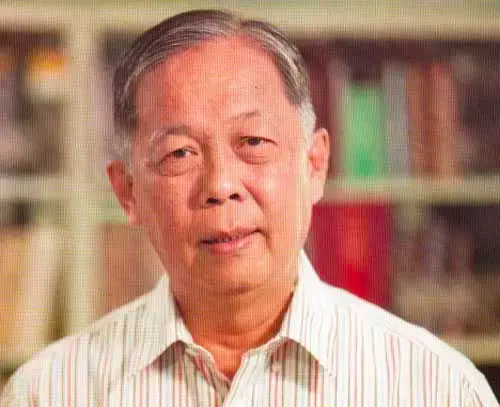
Resil Mojares
Resil B. Mojares, Professor Emeritus, was director of the Cebuano Studies Center since its founding in 1975 until 1996, when he assumed the directorship of San Carlos Publications. A distinguished professor in Literature and History, Dr. Mojares has a bachelor’s degree in English, a master’s degree in Literature and postgraduate studies all at the University of San Carlos. His doctorate in Literature is from the University of the Philippines in Diliman.
A noted writer, critic and cultural researcher, he has won several National Book Awards from the Manila Critics Circle for works in literary criticism, local and national history, urban and rural history, and political biography. Mojares has received the Free Press and Carlos Palanca prizes for his short stories, a fellowship from the UP Creative Writing Center, and teaching and research fellowships from the Ford, Toyota, and Rockefeller foundations, Fulbright Program, and Social Science Research Council (New York), and two prizes from outside the country: the Grant Goodman Prize for History from the Association of Asian Studies, and the Fok Ying Tung Southeast Asia Prize for his contribution to the development of civilization, culture and science in Southeast Asian countries.
He received a Centennial Award for Cultural Research from the Cultural Center of the Philippines. Dr. Mojares continues to write scholarly books like The War Against the Americans and Brains of the Nation, and is finishing a definitive provincial history of Cebu.
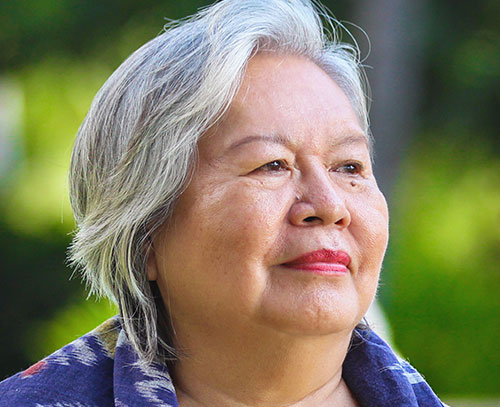
Merle Alunan
Merlie M. Alunan spent time in different places in the Visayas and Mindanao at different times in her life and thus acquired a level of fluency in the major Visayan languages. She finished the Bachelor’s Degree in Education at the University of the Visayas, major in English and her Master’s Degree at Silliman University as a Fellow for Literature. She taught in several schools all over the Visayas: Colegio de la Inmaculada Concepcion where she taught high school and college English; Silliman University itself as part of her Fellowship deal; Divine Word College in Tagbilaran City (now Holy Name University); UP College Cebu; and finally, UPV Tacloban College where she taught until her retirement in 2008. She assisted in the Silliman University National Summer Writers workshop between 1985 to 1991 when it was under the Directorship of the Doctors Edilberto and Edith Tiempo. She initiated creative writing workshops in UP Tacloban College and intensified her advocacy to encourage the young to write in the native language. While doing her workshops with its specific advocacy, she became aware of the lack of reading materials and models for the aspiring Visayan writer. She has since published Sa Atong Dila Introduction to Visayan Literature (UP Press, 2015); Susumaton Oral Narratives of Leyte (Ateneo de Manila University Press, 2016), Tinalunay Hinugpong nga Panurat ha Waray (UP Press, 2017). All three books won the National Book Award in 2016, 2017, and 2018 respectively. Alunan writes poetry in English and Cebuano and has received honors for them from the Carlos Palanca Memorial Awards for Literature, the Philippines Free Press, and UMPIL. She held residencies with the Hedgebrook Retreat for Women Writers in the US, the National University of Singapore, and Sahitya Akademi of India.
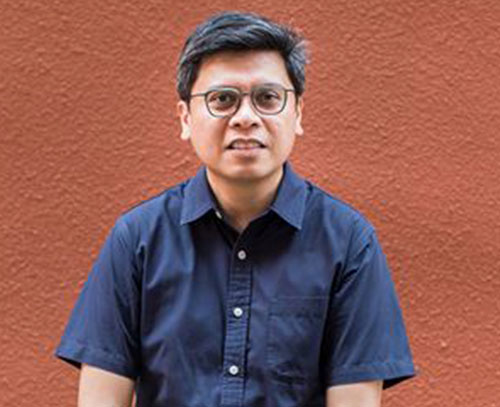
Patrick Flores
Patrick Duarte Flores is a Filipino curator, critic, and professor. Born in Ilioilo, he received degrees in humanities, art history, and Philippine studies at the University of the Philippines Diliman. He is a professor of Art Studies in the Department of Art Studies at the University of the Philippines and curator of the Vargas Museum in Manila. He was also a curator of the Arts Division, Philippine National Museum and curator of the Philippine Pavilion at the Venice Biennale in 2015. He was the artistic director of the 2019 Singapore Biennale.
Plenary Speakers
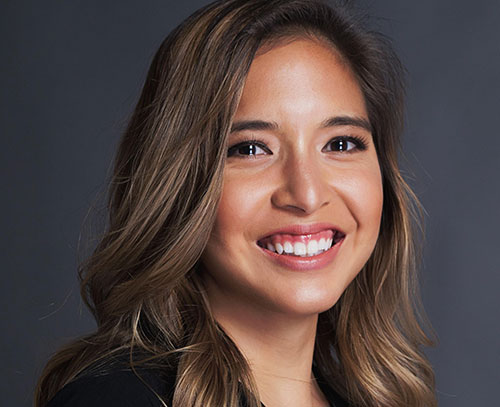
Nicole CuUnjieng Aboitiz
Nicole CuUnjieng Aboitiz is a Research Fellow at the University of Cambridge, where she also teaches World History, and is the Executive Director of the Toynbee Prize Foundation. Immediately prior, she was a Postdoctoral Fellow at the Weatherhead Center for International Affairs at Harvard University. She earned her Ph.D. in Southeast Asian and International History at Yale University. Her broad research interests centre on global intellectual history and Southeast Asian environmental, cultural, and social history. Her current research analyses the co-constitution of class and relationships with the natural environment over the 19th to the 20th centuries in the Philippines.

Michael Cullinane
Michael Cullinane is the Associate Director of the Center for Southeast Asian Studies. He has extensive research and residence in the Philippines, with interests in 19th and 20th-century Philippine social, political, and demographic history.

Stephanie Marie Coo
Dr. Stephanie Marie Coo is a Marie Curie Postdoctoral Fellow (EU Horizon2020-Athenea3i) at the Universidad de Granada (Spain) and Universidade Nova de Lisboa-NOVA School of Law (Portugal). She obtained her PhD in History (très honorable avec félicitations) from Université Nice Sophia Antipolis (France), Master of Arts in History and Bachelor of Science in Management from the Ateneo de Manila University (Philippines). She holds an Assistant Professorship at the Department of History of the Ateneo de Manila University, where she served as Chair of the Internationalization Committee and Coordinator for Internationalization between 2018 and 2019. She is the author of Clothing the Colony: Nineteenth-century Philippine Sartorial Culture, 1820-1896 (Ateneo de Manila University Press, 2019). Born and raised in Bacolod City, Negros Occidental and educated in Manila, Beijing and Nice, Dr. Coo is a proud Chinese-FIlipino Ilongga currently living in Lisbon.
Panels
Pre-colonial Material Cultures
Jose Eleazar Bersales
The Trade in Export Ceramics in the Late Pre-colonial Period (14th-16th Centuries CE): Reexamining the Evidence from the Visayas
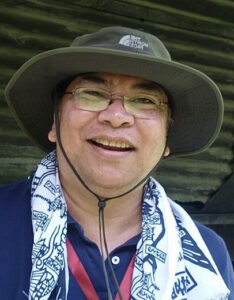 Beginning with the University of Michigan Field Expedition to the Southern Philippines conducted by Carl Guthe in 1920-24, a host of excavations and collecting trips have dotted the archaeological horizon of the Visayas for over a century now. In this paper, I shall reexamine these studies, focusing on the ceramic materials recovered, in order to build a picture of a vibrant trade in this export commodity, monopolized by Chinese merchants starting in the 9th century CE but later challenged by their Thai and Vietnamese rivals beginning in the mid-14th century CE up to the arrival of Ferdinand Magellan in Cebu in 1521. Of particular importance in this paper is Florante Henson’s attempt at creating a hierarchy of sites in his 1983 dissertation based on Guthe’s sites in the Visayas and also of Masao Nishimura’s attempt establishing settlement patterning in late precolonial Cebu City and John Peterson’s summation of archaeological investigations in the Visayas and their implications for a better understanding of this period that immediately precedes the Spanish conquest.
Beginning with the University of Michigan Field Expedition to the Southern Philippines conducted by Carl Guthe in 1920-24, a host of excavations and collecting trips have dotted the archaeological horizon of the Visayas for over a century now. In this paper, I shall reexamine these studies, focusing on the ceramic materials recovered, in order to build a picture of a vibrant trade in this export commodity, monopolized by Chinese merchants starting in the 9th century CE but later challenged by their Thai and Vietnamese rivals beginning in the mid-14th century CE up to the arrival of Ferdinand Magellan in Cebu in 1521. Of particular importance in this paper is Florante Henson’s attempt at creating a hierarchy of sites in his 1983 dissertation based on Guthe’s sites in the Visayas and also of Masao Nishimura’s attempt establishing settlement patterning in late precolonial Cebu City and John Peterson’s summation of archaeological investigations in the Visayas and their implications for a better understanding of this period that immediately precedes the Spanish conquest.
Bio
Dr. Bersales is a professor at the Department of Anthropology, Sociology and History of the University of San Carlos and director of USC Museum. He obtained his doctorate in Anthropology from USC under a sandwich program in archaeology with New Mexico State University and holds an M.A. in Philippine Studies from the University of the Philippines-Diliman. Bersales was a German Academic Exchange grantee at the University of Bielefeld and a Graduate Research Scholar at the Asia Research Institute (ARI) of the National University of Singapore (NUS). He has written a number of books on Cebu’s colonial heritage.
Florina Capistrano-Baker
Before Christianity: Pre-colonial Gold from Central and Eastern Visayas
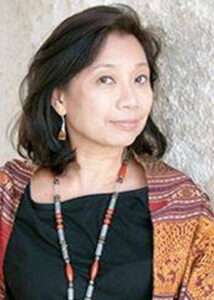 When the explorer Ferdinand Magellan and his men first landed in the Visayas in 1521, they saw inhabitants adorned with gold earrings, bracelets, and armlets, some using gold spear decorations. Conversion began in earnest in 1565 after Miguel Lopez de Legazpi and the Augustinian missionary Andres de Urdaneta landed on the island of Cebu. Spaniards reported gold jewelry in astonishing quantities. They sacked the graves when they realized that such jewelry was part of the bahandi, or heirloom wealth, buried with high-ranking datus.
When the explorer Ferdinand Magellan and his men first landed in the Visayas in 1521, they saw inhabitants adorned with gold earrings, bracelets, and armlets, some using gold spear decorations. Conversion began in earnest in 1565 after Miguel Lopez de Legazpi and the Augustinian missionary Andres de Urdaneta landed on the island of Cebu. Spaniards reported gold jewelry in astonishing quantities. They sacked the graves when they realized that such jewelry was part of the bahandi, or heirloom wealth, buried with high-ranking datus.
This paper calls attention to important pre-Christian gold adornments irregularly recovered from various sites in central and eastern Visayas from the 1960s to the 1970s, formerly in the collection of the late Leandro and Cecilia Locsin, and now at the Ayala Museum. Primarily from the islands of Cebu, Leyte, and Samar, the objects include gold chains, ear ornaments, embellishments for cloth garments, and funerary masks tentatively dated ca. 10th-13th centuries, many found in association with Chinese export ceramics. Some forms suggest familiarity with Hindu concepts such as a horn-shaped ring alluding to the Hindu god Shiva’s bull. A flamboyant ring portrays the kirtimukha or “face of glory,” another emblem of Shiva. Ornaments depicting Vishnu’s mount, Garuda, reaffirm Hindu presence before Christianity. How is this corpus helpful in reconstructing pre-Christian Visayan cultures? Does the material evidence align with colonial texts? Are there distinctive Visayan aesthetics, styles, or boundary-keeping mechanisms to be discerned from this early period?
Bio
Florina H. Capistrano-Baker received the Ph.D. in Art History at Columbia University. She received fellowships from the American Association of University Women, Asian Cultural Council, Ford Foundation, Columbia University, Metropolitan Museum of Art, and Getty Research Institute. She is author of Art of Island Southeast Asia: The Fred and Rita Richman Collection in The Metropolitan Museum of Art (Yale University Press, 1994), Philippine Ancestral Gold (NUS Press, 2011), Philippine Gold: Treasures of Forgotten Kingdoms (Asia Society, New York, 2015), and co-editor of Transpacific Engagements: Visual Culture of Entangled Empires (Getty Research Institute, Kunsthistorisches Institut in Florenz–Max-Planck-Institut, Ayala Foundation, forthcoming).
Felice Noelle Rodriguez
The 16th Century Visayan Warrior and his Weapons
 Several hundred warriors arrayed for battle along the shores of Sugbu faced the Spanish conquistador Miguel Lopez de Legazpi in 1565. “Be it so! Come on! We await you here.” They broke into loud cries, covering themselves with their shields and brandishing their lances. This is one of many narrations that serve as a window into the world of the Visayan warrior. This paper shall look into these descriptions and expound on the implements and actions used by looking into texts and images. Francisco Ignacio Alcina and Mateo Sanchez were Jesuit missionaries based in the Bisayan islands of Samar, Leyte and Cebu in the early years of colonization. Alcina lived in Samar and Leyte for more than thirty years. His work entitled Historia de las Islas e Indios de las Bisayas (1668) offers us a detailed account of warfare in two chapters of his monumental work on Bisayan pre-colonial ethnography. It is more than a glimpse into native society. Based on his descriptions of war and their implements we begin to understand native action when faced with the colonial ruler. It is through understanding this native form of warfare that we understand and look into meanings of native action during the time of encounter. It offers us then a way of having a deeper understanding of native life as we sift through Spanish chronicles. Mateo Sanchez arrived in Manila in 1595, later assigned to Cebu. He wrote a Bisayan-Tagalog dictionary which articulate descriptions set by Alcina, Miguel de Loarca, (1582), the anonymous 16th century Boxer Codex, and other documents from Spain’s early encounters with the native in the Visayan waters. The paper hopes to piece together the Visayan warrior in action with his weapons
Several hundred warriors arrayed for battle along the shores of Sugbu faced the Spanish conquistador Miguel Lopez de Legazpi in 1565. “Be it so! Come on! We await you here.” They broke into loud cries, covering themselves with their shields and brandishing their lances. This is one of many narrations that serve as a window into the world of the Visayan warrior. This paper shall look into these descriptions and expound on the implements and actions used by looking into texts and images. Francisco Ignacio Alcina and Mateo Sanchez were Jesuit missionaries based in the Bisayan islands of Samar, Leyte and Cebu in the early years of colonization. Alcina lived in Samar and Leyte for more than thirty years. His work entitled Historia de las Islas e Indios de las Bisayas (1668) offers us a detailed account of warfare in two chapters of his monumental work on Bisayan pre-colonial ethnography. It is more than a glimpse into native society. Based on his descriptions of war and their implements we begin to understand native action when faced with the colonial ruler. It is through understanding this native form of warfare that we understand and look into meanings of native action during the time of encounter. It offers us then a way of having a deeper understanding of native life as we sift through Spanish chronicles. Mateo Sanchez arrived in Manila in 1595, later assigned to Cebu. He wrote a Bisayan-Tagalog dictionary which articulate descriptions set by Alcina, Miguel de Loarca, (1582), the anonymous 16th century Boxer Codex, and other documents from Spain’s early encounters with the native in the Visayan waters. The paper hopes to piece together the Visayan warrior in action with his weapons
Bio
Felice Noelle Rodriguez is Visiting Scholar at the Ateneo de Zamboanga University. She holds masters and doctoral degrees in History from the University of the Philippines. She has published historical works on raiding, warfare, Christian discourses, nationalism and Zamboanga. Her English translation of Felix Laureano’s 1895 Recuerdos de Filipinas is going into its third printing. She has curated exhibits tracing diverse historical concerns: La Solidaridad, Philippine postcards and the history of Zamboanga. She continues her research on the Malay world, global trade systems, warfare and interconnections. She is currently working on a visual history of Zamboanga.
Visayan Representations from Colonial Archives
Voltaire Oyzon
Winaray without Tears: Some Notes on the transcriptions of Bisayan Terms and Phrases in Paul Lietz’s Historia of Alzina
This paper is a preliminary examination of sample transcriptions of the Bisayan/Waray sentences, phrases and, terms of Part 1, Book 3 in Paul Lietz’s preliminary translation into English of Alzina’s Historia (1668), also known as the Muñoz Text. Francisco Ignacio Alzina (1610-1674) is a Jesuit missionary who spent more than thirty years learning and recording the Bisayan culture, particularly in the Samar-Leyte area, which speaks Waray language. Alcina’s account is considered the most complete and faithful record of the Bisayan culture upon contact with the West. Juan Bautista Muñoz, in 1784, discovered Alzina’s Historia in Seville. This has come down to us as the Muñoz Text, which Lietz and, Hester recognized as faithful to the original manuscript. This study is guided under the Postcolonial rubric, which looks at colonization projects as devaluation of a nation’s culture. Postcolonialism posits that one of its tasks is to resurface what has been silenced, subsidiarized and marginalized. Using the dictionaries of Sanchez (1617), Mintrida (1637), de la Encarnacion (1885), Sanchez de la Rosa (1914), and Makabenta (2004), and personal knowledge as a writer/speaker of Bisayan/Waray, sentences, phrases and, terms in Alzina’s Historia are cross-examined, verified and annotated. In addition to semantic verification, syllabic patterns, graphemic and phonemic similarities of terms in Alzina’s and in the various dictionaries are also examined with the use of a computer software to triangulate the results. If discrepancy in meaning or mis-transcription is found, an appropriate or, suggested transcription or, translation is provided.
Bio
Voltaire Q. Oyzon teaches Waray language, and Social Science courses at Leyte Normal University. His first poetry collection entitled “An Maupay ha mga Waray” (The Good Thing With the Warays) was published in 2008 by the Philippines National Commission for Culture & the Arts. His works (both in original Waray and in translation) appeared in different anthologies. He recently defended his dissertation entitled “A Corpus-Based Study on the Morphosyntactic Functions of Waray Substantive Lexical Items,” which demonstrated that in natural use of the language in communication, roots with or without affixes, are neither absolutely categorized into nouns, verbs, and adjectives, nor are they completely uncategorized. Rather, particular roots tend to function referentially (“as nouns”), predicatively (“as verbs”) or attributively (“as adjectives”), though they are not absolutely tied to any particular function. Currently, he is working with Thomas E. Payne on a communicatively based grammar of Waray.
Andrea Malaya Ragragio
An Anthropological Rethinking of the Sixteenth-Century Pintados
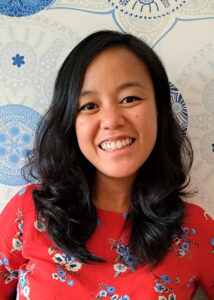 No image of ‘precolonial’ Visayas is as emblematic as the tattooed Pintados. But this imagery is almost always coupled with notions of warriorship, male valor and masculinity, which are apparent in scholarly and popular discourses about the ‘precolonial’ Visayas and beyond. This presentation is an expanded treatment of a preliminary discussion opened in Ragragio and Paluga (2019) where we called for a declustering of the hardened links between tattooing and warriorship. Comparing and contrasting what we know about Visayan tattooing from early Spanish sources with our own research about tattooing among non-Christianized or nominally Christianized groups in southern and eastern Mindanao has opened methodological queries on how to reread the historical materials that have frequently been used as basis for portraying tattooing as belonging to the domain of warriorship and masculinity. Such associations should not be treated as historical or ethnographic givens, and indeed greatly narrows our understanding of tattooing as a social practice. A more cautious re-evaluation of Visayan tattooing shows us that it was less a monopoly or privilege of a warrior class, and more a broadly-accessible custom that could have simply been used to various degrees or significations by particular groups. We will also forward a path towards an anthropologically-informed interpretation of sixteenth-century Visayan tattooing: instead of construing it as closely specifying a ‘trait’ or ‘identity’, it may be investigated as a practice that has always been demographically variable in meanings and frequencies, but one that has taken a particular bent on ‘warriorship’ during that phase of colonial engagement. (252 words) Ragragio, AMM and MD Paluga. 2019. An Ethnography of Pantaron Manobo Tattooing (Pangotoeb): Towards a Heuristic Schema in Understanding Manobo Indigenous Tattoos. Southeast Asian Studies 8(2): 259-294.
No image of ‘precolonial’ Visayas is as emblematic as the tattooed Pintados. But this imagery is almost always coupled with notions of warriorship, male valor and masculinity, which are apparent in scholarly and popular discourses about the ‘precolonial’ Visayas and beyond. This presentation is an expanded treatment of a preliminary discussion opened in Ragragio and Paluga (2019) where we called for a declustering of the hardened links between tattooing and warriorship. Comparing and contrasting what we know about Visayan tattooing from early Spanish sources with our own research about tattooing among non-Christianized or nominally Christianized groups in southern and eastern Mindanao has opened methodological queries on how to reread the historical materials that have frequently been used as basis for portraying tattooing as belonging to the domain of warriorship and masculinity. Such associations should not be treated as historical or ethnographic givens, and indeed greatly narrows our understanding of tattooing as a social practice. A more cautious re-evaluation of Visayan tattooing shows us that it was less a monopoly or privilege of a warrior class, and more a broadly-accessible custom that could have simply been used to various degrees or significations by particular groups. We will also forward a path towards an anthropologically-informed interpretation of sixteenth-century Visayan tattooing: instead of construing it as closely specifying a ‘trait’ or ‘identity’, it may be investigated as a practice that has always been demographically variable in meanings and frequencies, but one that has taken a particular bent on ‘warriorship’ during that phase of colonial engagement. (252 words) Ragragio, AMM and MD Paluga. 2019. An Ethnography of Pantaron Manobo Tattooing (Pangotoeb): Towards a Heuristic Schema in Understanding Manobo Indigenous Tattoos. Southeast Asian Studies 8(2): 259-294.
Bio
Andrea is an anthropologist and archaeologist working with the Pantaron Manobo of southern Mindanao in the Philippines. At the moment, she is on study leave from teaching duties at the College of Humanities and Social Sciences at the University of the Philippines (Mindanao) to pursue PhD studies in Cultural Anthropology and Development Sociology at Leiden University. She was the recipient of an Early Career Grant from the National Geographic Society in 2018. She finished her BA in Anthropology (cum laude) and MA in Archaeology at the University of the Philippines (Diliman).
Rey Carlo Gonzales
Reifying the “Visayan” in Filipino Martial Arts
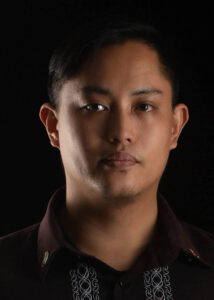 Starting from the 1970s, Filipino Martial Arts—more specifically Arnis, also termed as Kali, and Eskrima—became part of national identity-building in the Philippines. In 2009, the Philippine government signed into law an act that officially made Arnis a national symbol, sport, and martial art. It is presently one of the most recognizable beacons of Filipino national identity, just as Taekwondo is to Korea and Muay Thai is to Thailand. Negotiating Arnis as a source of Filipino identity has been a long, drawn-out process that peaked in the 1970s and the early 2000s. Moreover, there is a visibly strong participation of Visayan practitioners in the construction and articulation of Arnis as a symbol of the nation. At the core of this process lies the historic figure of Lapulapu, chief of Mactan, who is identified as being the one who defeated the conquistador Magellan in 1521. Taking from the works of Hobsbawm & Ranger (1992), Ivy (1995), Smith (1986, 1991), and Pemberton (1994) on invented tradition, national identity, and national symbols, this paper introduces the concept of ‘Reverse Appropriation’. It argues that as the state appropriated Filipino Martial Arts for nation-building, Visayans practitioners subscribed to the project in order to articulate their regional identity (especially through Lapulapu). Furthermore, Visayan practitioners are able to locate themselves within the nation and express their understanding of nationalism. This paper examines three examples of how Lapulapu was reified as a national symbol in Filipino Martial Arts: (1) the congregation of Filipino Martial Arts practitioners in Lapulapu monuments or shrines; (2) the symbolic use of Lapulapu in Filipino Martial Arts trophies and logos; and (3) how Lapulapu is imagined in the sayaw (dance) category of Filipino martial Arts tournaments.
Starting from the 1970s, Filipino Martial Arts—more specifically Arnis, also termed as Kali, and Eskrima—became part of national identity-building in the Philippines. In 2009, the Philippine government signed into law an act that officially made Arnis a national symbol, sport, and martial art. It is presently one of the most recognizable beacons of Filipino national identity, just as Taekwondo is to Korea and Muay Thai is to Thailand. Negotiating Arnis as a source of Filipino identity has been a long, drawn-out process that peaked in the 1970s and the early 2000s. Moreover, there is a visibly strong participation of Visayan practitioners in the construction and articulation of Arnis as a symbol of the nation. At the core of this process lies the historic figure of Lapulapu, chief of Mactan, who is identified as being the one who defeated the conquistador Magellan in 1521. Taking from the works of Hobsbawm & Ranger (1992), Ivy (1995), Smith (1986, 1991), and Pemberton (1994) on invented tradition, national identity, and national symbols, this paper introduces the concept of ‘Reverse Appropriation’. It argues that as the state appropriated Filipino Martial Arts for nation-building, Visayans practitioners subscribed to the project in order to articulate their regional identity (especially through Lapulapu). Furthermore, Visayan practitioners are able to locate themselves within the nation and express their understanding of nationalism. This paper examines three examples of how Lapulapu was reified as a national symbol in Filipino Martial Arts: (1) the congregation of Filipino Martial Arts practitioners in Lapulapu monuments or shrines; (2) the symbolic use of Lapulapu in Filipino Martial Arts trophies and logos; and (3) how Lapulapu is imagined in the sayaw (dance) category of Filipino martial Arts tournaments.
BioRey Carlo T. Gonzales is a Filipino professor of History at the University of the Philippines—Visayas. He finished his PhD in History at the University of Manchester. His field of interest lies in the study of Nationalism, Local History, and Military History. He is also a member of the International Modern Arnis Federation where he holds the rank of Lakan 3.
Performing Local Histories
Tracing local histories in southern Cebu through parish music and ritual
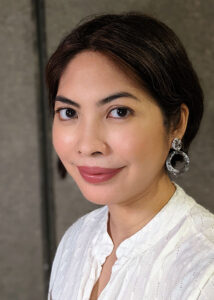 The paper contributes to local histories in the Visayas through the study of parish music collections in southern Cebu. The research examines manuscripts and printed music works found in Oslob, Argao, and Boljoon, to trace a history of the music-making practices surrounding church ritual in the early-to-late 20th century. The research provides information that points to the existence of many skilled individuals who served as church organists, band leaders and members, choir members, composers, and copyists in the area. The repertoire the church musicians used was diverse, comprised of works from Europe, the United States and the Philippines, which reflected the shifting policies of the Catholic Church towards liturgical ritual, as well as the local sensibilities of the musicians who performed the music. The paper also discusses the Flores de Mayo, a popular devotional ritual in Cebu and the Philippines as a way of contextualizing the many devotional songs to Mary found in the collections. While the majority of the music is no longer used today (especially the many Latin masses that have been rendered obsolete after the reforms of the Second Vatican Council), some Marian hymns have continued to be sung for the Flores and have lived on as part of oral tradition.
The paper contributes to local histories in the Visayas through the study of parish music collections in southern Cebu. The research examines manuscripts and printed music works found in Oslob, Argao, and Boljoon, to trace a history of the music-making practices surrounding church ritual in the early-to-late 20th century. The research provides information that points to the existence of many skilled individuals who served as church organists, band leaders and members, choir members, composers, and copyists in the area. The repertoire the church musicians used was diverse, comprised of works from Europe, the United States and the Philippines, which reflected the shifting policies of the Catholic Church towards liturgical ritual, as well as the local sensibilities of the musicians who performed the music. The paper also discusses the Flores de Mayo, a popular devotional ritual in Cebu and the Philippines as a way of contextualizing the many devotional songs to Mary found in the collections. While the majority of the music is no longer used today (especially the many Latin masses that have been rendered obsolete after the reforms of the Second Vatican Council), some Marian hymns have continued to be sung for the Flores and have lived on as part of oral tradition.
Bio
Patricia Marion L. Abrera is an assistant professor from the Department of Art Studies in the University of the Philippines. She holds a bachelor and master’s degree in Art Studies from the same university. She has a longstanding interest in Cebuano culture and music history and has written on the Flores de Mayo, a Marian devotion as performed in Oslob, and a music collection found in the same town.
Jopol Alvin Ancheta
Godparenthood, Geography and Ethnicity: Spiritual Kinship in Late-19th Century Molo, Ilo-Ilo
The Catholic institution of baptismal godparenthood is one of the lasting traditions brought by Spanish colonization of the Philippines that is still relevant in Filipino society today. For more than four centuries, this cultural practice has been an essential part of the local kinship system because of its capacity to build and strengthen ties. Historiography maintains the assumption that parents choose the godparents of their child based on various factors such as socioeconomic background and propinquity and not on their ability to hone the child’s Catholic upbringing. This study attempts not only to put these assertions to test but more importantly to describe this tradition using selected demographic data on a 19th century community. Molo, formerly an independent pueblo of Iloilo province and presently a district of Iloilo City, is the selected locality of this study due to its prominence in the region at the time as well as the quality of pertinent sources. Using residence and ethnic backgrounds emanating from 19th century baptismal registers, this study analyzes the selection of godparents in Molo, Iloilo. Ultimately, this paper aspires to contribute not only in the study of Visayan colonial cultural practices but also in social and family history of the Philippines.
Bio
Jopol Alvin C. Ancheta is an assistant professor at the Department of History, University of the Philippines Diliman. His research interests include social, family, and diplomatic histories.
Kyle Philip Ravena
Sayaw sa Ginunting: A Postcolonial Analysis of a Wedding Dance
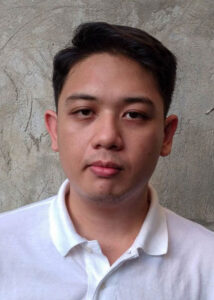 The “sayaw sa ginunting”, or “sinulog”, is a ritual commonly performed in the rural communities of Central Panay. It is performed after a formal Christian wedding ceremony by a pair, or pairs, of blade-wielding dancers leading the newlywed couple usually from the church to the reception, moving forward while dancing, or clashing, in an “atras-abante” (forward-backward) movement. While variations of the dance exist and its origins still uncertain, a postcolonial analysis of the dance suggests its important position within the space of post-colonial Philippine society. The choreography, the instruments, and even the costumes of the dancers point to indigenous symbols and meanings understood by the community. It is a dance of resistance from the legacies of colonialism, and to the dancers and the newlywed couple, a symbol of intangible Visayan cultural history and heritage.
The “sayaw sa ginunting”, or “sinulog”, is a ritual commonly performed in the rural communities of Central Panay. It is performed after a formal Christian wedding ceremony by a pair, or pairs, of blade-wielding dancers leading the newlywed couple usually from the church to the reception, moving forward while dancing, or clashing, in an “atras-abante” (forward-backward) movement. While variations of the dance exist and its origins still uncertain, a postcolonial analysis of the dance suggests its important position within the space of post-colonial Philippine society. The choreography, the instruments, and even the costumes of the dancers point to indigenous symbols and meanings understood by the community. It is a dance of resistance from the legacies of colonialism, and to the dancers and the newlywed couple, a symbol of intangible Visayan cultural history and heritage.
Bio
Kyle Philip M. Ravena is currently a part time lecturer at the Division of Social Sciences, College of Arts and Sciences, University of the Philippines Visayas. He is also a graduate student, pursuing Master of Arts in Philippine Studies at the Asian Center, University of the Philippines Diliman. His research interests include local history and culture, nationalism, and historiography.
The Visayas through its Epic Narratives
Myfel Paluga
Personhood, cosmology, and ‘The Man With No Breath’ in Visayas and Mindanao epic narratives
‘The Man With No Breath’ is a recurring figure in the epic narratives of highland Visayas, and the lumad of Mindanao. This character, either a protagonist or an antagonist, and always a man of high regard such as a ‘warrior’ or a ‘chieftain,’ appears in Labaw Donggon (Jocano 1965) and the Sugidanon epics (Magos 2014-2017) of Panay, as well as in the Tuwaang (Manuel 1975) and Tolalang epics from Arakan, Bukidnon, and Davao del Norte in the Pantaron Mountain Range in southern Mindanao. Present too in all these epics is the notion that one’s breath (ginhawa or goynawa) is detachable or separable from the rest of the body. As there is no literary and/or anthropological study done so far on this subject and theme, the paper will maximize these cultural texts and our own ethnographic data to provide an exploratory anthropological grounding/reading of this pan-Philippine figure of ‘the man with no breath’ and this seemingly curious idea of a ‘detachable breath’. We will do this by highlighting the range of meanings of ginhawa/goynawa (as ‘breathing’, ‘thinking’, ‘feeling’, ‘loving’) and its conceptual structure in both the epic and lived worlds of the communities that chant them. We argue that the figure of ‘the man with no breath’ is an important literary pointer that dramatizes a schema of ‘personhood’ depicting a human ‘person’ as linked, via a segmented ginhawa/goynawa, to nonhuman ‘persons’, which together form a collective ‘world’ (banwa/ingod). This schema of ‘breath’ linking ‘persons’ and ‘the world’ appears to be an enduring feature shared by Visayan and Mindanao highlanders that surfaces potential motifs in Austronesian cosmology. At a wider theoretical import, this epic-based idea of a ‘detachable breath’ easily calls to mind the thesis on the ‘partibility of the person’ and ‘dividuality,’ about which we will offer an initial comparative view. (300 words) Jocano, F.L. 1965. The Epic of Labaw Donggon. Quezon City: University of the Philippines Press. Magos, A.P. (Ed.). 2014-2017. Sugidanon Epics of Panay (Seven volumes). Quezon City: University of the Philippines Press. Manuel, E.A. 1975. Tuwaang Attends a Wedding. Quezon City: Ateneo de Manila University Press.
Bio
Myfel Paluga is an Associate Professor of the Department of Social Sciences, College of Humanities and Social Sciences, University of the Philippines Mindanao, where he teaches anthropology and other social science subjects. He has done research on Philippine macaques, human-animal and human-plant relations, and more recently, on the history and anthropology of the Manobos of the Pantaron Mountain Range in Mindanao. He was an Asian Public Intellectuals Fellow under the Nippon Foundation. He is presently doing his Ph.D. studies on Manobo epic narratives at the University of Leiden, The Netherlands.
Alicia Magos
Panay Sugidanon (Epic Narratives) as Paintings of Panay Life and World View
 The Panay Bukidnon sugidanon (epic) are long narrative stories which are vertically spread and transmitted orally along a long line of chanters. In the experience of an entire family of chanters, the Caballero family learned the epics by constant listening to the narratives from their great grandparents and down the line, some of whom are esteemed babaylans (medium) and well-known binukots (kept-maiden). While remaining a community-bred practice and often perceived as pre-colonial, the narratives became a popular discourse among academics and scholars who wanted to investigate linguistic, historical, and folkloric complexities in the stories. However, ethnographic and reflexive analysis of the Panay epics based on the original transcription and the closest Kinaray-a translation of the epics reveal that the content of the narratives reveal a close correspondence to and symbolic association with Panay Bukidnon community life. The sugidanun are paintings and descriptions of customary laws, conflict settlement, and societal mores; descriptions of social and institutional life, i.e. marriage customs; descriptions of schemes of maritime and land-based transportation; descriptions of gender relations; descriptions of basis of power and authority; and descriptions of spiritual and indigenous cosmology. The sugidanon, thus, interweaves with local experience and is a reflection of the native mind shaped by a long tradition of chanting.
The Panay Bukidnon sugidanon (epic) are long narrative stories which are vertically spread and transmitted orally along a long line of chanters. In the experience of an entire family of chanters, the Caballero family learned the epics by constant listening to the narratives from their great grandparents and down the line, some of whom are esteemed babaylans (medium) and well-known binukots (kept-maiden). While remaining a community-bred practice and often perceived as pre-colonial, the narratives became a popular discourse among academics and scholars who wanted to investigate linguistic, historical, and folkloric complexities in the stories. However, ethnographic and reflexive analysis of the Panay epics based on the original transcription and the closest Kinaray-a translation of the epics reveal that the content of the narratives reveal a close correspondence to and symbolic association with Panay Bukidnon community life. The sugidanun are paintings and descriptions of customary laws, conflict settlement, and societal mores; descriptions of social and institutional life, i.e. marriage customs; descriptions of schemes of maritime and land-based transportation; descriptions of gender relations; descriptions of basis of power and authority; and descriptions of spiritual and indigenous cosmology. The sugidanon, thus, interweaves with local experience and is a reflection of the native mind shaped by a long tradition of chanting.
Bio
Alicia P. Magos is a socio-cultural anthropologist and a professor emeritus of the University of the Philippines Visayas who spent decades of her life as an educator and researcher in Western Visayas studying the indigeneity of the mountain peoples of Panay. Her researches on these people, collectively referred to as Panay Bukidnon, were not only instructional purposes but were used to show their primacy in their ancestral domain. While teaching in the UP Visayas in the 1990s, she was a recipient of a Fulbright Grant in the USA; a Metrobank Awardee in 1999; and a SEAMEO (Southeast Asian Ministries Education Organization). In 2015, the first book in a series of 13 epics won for her the National Book Award for Poetry in Kiniray-a. Last April 29, 2017, she was also given a National Award (Gawad Paz Marquez Benitez) by UMPIL (Unyon ng Manunulat sa Pilipinas) in their 43rd Congress held at the Rizal Library, Ateneo de Manila for her lifetime achievement as an educator, a researcher, and a scholar.
Early Sol Gadong
A Look at the Significance of Numbers and Measurement to Visayan Culture through the Panay Sugidanun (Epics)
 This paper will look at concepts related to numbers and measurements in the epics of the Panay Bukidnon (upland dwellers of Central Panay in Western Visayas) in an attempt to look at another dimension of the culture of this indigenous Visayan community. One notable feature of the social life of this community is the chanting of epics (sugidanun). Chanted in a language that is quite close to Kinaray-a, the Panay Sugidanun contain numbers that are limited to those with small (one to ten) and very big (hundreds and hundred millions) values, hardly any in-betweens. Moreover, these stories of the adventures of warriors, women who take the male form to save their spouses from a cave of enchantments, and the quest for an old woman’s golden pubic hair, among others, likewise reference concepts in measurement that are determined through body parts, natural phenomena, and according to seasons of planting and harvest. In addition, measuring devices mentioned are expectedly similar to those used in the Panay Bukidnon community, often sourced from natural resources. These features seem to coincide with the characteristics not only of most tribal languages, but of the West Visayans as a people. This paper will also discuss how these cultural features may be associated with the fact that Kinaray-a features the term isipán (isipon in Hiligaynon), a word carrying a negative connotation which means that (a) one expects to receive something equivalent to what they gave, or (b) one pays too close attention to their contribution and has a tendency to demand that others contribute at the same level, to highlight the inherent collectivist nature of the Panay Bukidnon.
This paper will look at concepts related to numbers and measurements in the epics of the Panay Bukidnon (upland dwellers of Central Panay in Western Visayas) in an attempt to look at another dimension of the culture of this indigenous Visayan community. One notable feature of the social life of this community is the chanting of epics (sugidanun). Chanted in a language that is quite close to Kinaray-a, the Panay Sugidanun contain numbers that are limited to those with small (one to ten) and very big (hundreds and hundred millions) values, hardly any in-betweens. Moreover, these stories of the adventures of warriors, women who take the male form to save their spouses from a cave of enchantments, and the quest for an old woman’s golden pubic hair, among others, likewise reference concepts in measurement that are determined through body parts, natural phenomena, and according to seasons of planting and harvest. In addition, measuring devices mentioned are expectedly similar to those used in the Panay Bukidnon community, often sourced from natural resources. These features seem to coincide with the characteristics not only of most tribal languages, but of the West Visayans as a people. This paper will also discuss how these cultural features may be associated with the fact that Kinaray-a features the term isipán (isipon in Hiligaynon), a word carrying a negative connotation which means that (a) one expects to receive something equivalent to what they gave, or (b) one pays too close attention to their contribution and has a tendency to demand that others contribute at the same level, to highlight the inherent collectivist nature of the Panay Bukidnon.
Bio
Early Sol Gadong is a graduate of BS in Applied Mathematics at UP Visayas, where she also completed her Master of Education (Major in Mathematics) degree. As Vice President of Hubon Manunulat, a regional writers organization, she also advocates for the reading and writing in the West Visayan languages and organizes conferences and literary festivals to raise awareness on these issues.
Her main research and public service interests include eLearning, Contextualization, teacher education, and the opportunities for interdisciplinarity of Mathematics, Culture, Gender, and Literature.
Visayan Literary Forms
Modern-day Babaylans: Contextualizing the Mamaratbat Tradition in Samar
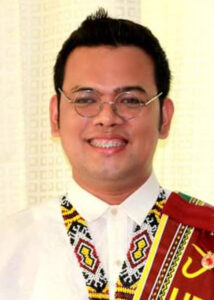 Mamaratbats (women chanters for the dead) persist in the town of Maydolong, a fourth-class municipality in the province of Eastern Samar, Philippines. The mamaratbats, composed of the cantora (leader) and parag-sanggawad (responder), sing Latin chants from memory during the vigilia de funtos y de funtas (vigil prayers for the dead) in the usual nine-day novena for a dead person. Documenting oral narratives and complemented with archival documents, this paper primarily maps the historical origin of this practice in the locale, describes its socio-cultural aesthetics, and highlights the role of the mamaratbats, in keeping the tradition and role that was once performed by the babaylans (priestesses) in the precolonial Visayan societies. This paper records a century-old practice and traces the cultural context of the panmatbat (chanting) tradition in the locale. Aside from documenting the cultural intricacies of the tradition, this paper furtherly contends that the existence of the mamaratbat tradition, albeit its social threats, can be contextualized in the subservience and recalcitrance of the babaylan tradition in the different periods of historical development of the Visayan societies, henceforth arguing that mamaratbats are our modern-day babaylans. Keywords: Babaylans, mamaratbat, panmatbat, Latin Prayers for the Dead, Women Chanters, socio-cultural aesthetics
Mamaratbats (women chanters for the dead) persist in the town of Maydolong, a fourth-class municipality in the province of Eastern Samar, Philippines. The mamaratbats, composed of the cantora (leader) and parag-sanggawad (responder), sing Latin chants from memory during the vigilia de funtos y de funtas (vigil prayers for the dead) in the usual nine-day novena for a dead person. Documenting oral narratives and complemented with archival documents, this paper primarily maps the historical origin of this practice in the locale, describes its socio-cultural aesthetics, and highlights the role of the mamaratbats, in keeping the tradition and role that was once performed by the babaylans (priestesses) in the precolonial Visayan societies. This paper records a century-old practice and traces the cultural context of the panmatbat (chanting) tradition in the locale. Aside from documenting the cultural intricacies of the tradition, this paper furtherly contends that the existence of the mamaratbat tradition, albeit its social threats, can be contextualized in the subservience and recalcitrance of the babaylan tradition in the different periods of historical development of the Visayan societies, henceforth arguing that mamaratbats are our modern-day babaylans. Keywords: Babaylans, mamaratbat, panmatbat, Latin Prayers for the Dead, Women Chanters, socio-cultural aesthetics
Bio
Jhonil C. Bajado graduated Bachelor of Arts in Social Sciences from the University of the Philippines -Visayas. He is currently the Head of Samar State University Museum and Archives. He is also the Chairperson of the Social Science Department and former Coordinator of Gender and Development Office of the College of Education, Samar State University, in Catbalogan City, Samar, Philippines. He is the pioneer of the “Samar Studies” program which is now an elective subject in the said university.
Cebuano Fiction in the 20th Century: Sites of Construction and Subversion
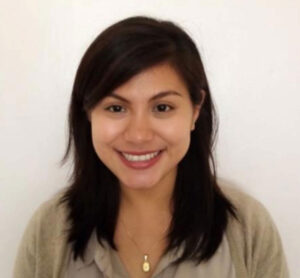
The history of printed Cebuano fiction began only at the close of the 19th century with the dawning of the typographical age in Cebu. The turn of the century marked the entry of the Cebuano writer into the resistance against the regimes of thought historical and contemporary powers helped to entrench. The vernacular literature of this period thus served as sites of
subversion against the American construction of the colonized Cebuano. This paper examines
the intellectual, historical and social currents of printed Cebuano fiction in the 20 th century,
specifically its short stories published in local newspapers and seeks to answer the following
questions: (1) What crisis or conjunctures in 20 th century history did Cebuano short story writers
experience where the publication of fiction became a public sphere for the discussion of
societal problems?; and (2) How did Cebuano short story writers negotiate with and seek to
redress these complex societal problems?
Bio
Bea Yap Martinez has a PhD in English with concentration in Literary Studies from the Silliman University. She is the recipient of the 2020 NCCA dissertation research award and the 2021 NCCA Manunulat Competitive Grants. She teaches undergraduate and graduate courses at the University of San Carlos and serves as the deputy director of the Cebuano Studies Center. She is also the Director of the Sentro ng Wika at Kultura in the University of San Carlos.
Between Balak and Poem: Publishing Conditions and Translation as Sites and Iterations of Resistance
 How might publishing conditions be thought not only as sites of power relations but also of resistances through translation? In this paper, I read as a troubling of linguistic assumptions and as cultural reiterations the translation and retranslation of Adonis Durado’s poem “Pagkaugdaw” by poet and translator Merlie Alunan. Durado’s balak was translated into English twice by Alunan; and although both English poems are similarly titled “After the Fire” they are significantly different from each other. I look closely at the publishing conditions of each translation, including the publication background of both writers, recognizing such conditions as fertile sites prompting linguistic changes that allowed the translator to reiterate cultural resistances in varied public spheres.
How might publishing conditions be thought not only as sites of power relations but also of resistances through translation? In this paper, I read as a troubling of linguistic assumptions and as cultural reiterations the translation and retranslation of Adonis Durado’s poem “Pagkaugdaw” by poet and translator Merlie Alunan. Durado’s balak was translated into English twice by Alunan; and although both English poems are similarly titled “After the Fire” they are significantly different from each other. I look closely at the publishing conditions of each translation, including the publication background of both writers, recognizing such conditions as fertile sites prompting linguistic changes that allowed the translator to reiterate cultural resistances in varied public spheres.
Bio
Shane Carreon is author of poetry books, most recently In Praise of Wilderness (forthcoming in 2021). He received awards from the Fulbright Program, Academy of American Poets, and Carlos Palanca, among others. He earned his masters at the University of the Philippines Diliman and his doctorate at Binghamton University, New York. He is currently Associate Professor at the University of the Philippines in Cebu. His research interests include Global South studies, poetry and phenomenology, translation, and popular culture.
Visayan Weaving Cultures
The Patadyong: An Enduring Weaving Tradition of the Women of Miag-ao, Iloilo
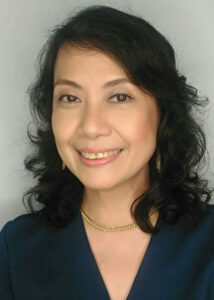 “The Patadyong: An Enduring Weaving Tradition of the Women of Miag-ao, Iloilo” is a study on the patadyong textile as a traditional craft, industry and artistry of the Ilonggo culture and women. The patadyong, a Philippine indigenous garment, is a tubular piece of clothing measuring one meter long and wide and was traditionally worn as a skirt in the Western Visayas region. Women from the municipality of Miag-ao, Iloilo province, wove this multi-colored plaid and striped garment for everyday wear, especially worn by old women in the farms. More than just an ordinary piece of clothing, the patadyong is a unique art that reflects a people’s culture, sentiment, and attitude. As an object intertwined with life, traditions, and customs from birth to death, it tells a story. It is also an expression of the Ilongga women’s ancestry in the art of weaving, where brightly colored yarns are meticulously combined to create the desired designs. The textile portrayed the women who produce it: steadfast, patient, tenacious and hardworking. Patadyong weaving is acknowledged as part of the cultural heritage of the Visayas region and has been practiced for generations. In the 19th century, Iloilo was considered the leading “textile center” of the Philippines, reaching its height of glory in the 1850’s. The patadyong industry reinforced this reputation and has contributed to the economic development of the province and region. This study contributes to the initial research of the patadyong, systematizing scarce library materials available on this subject. It is an initial attempt to awaken interest and awareness of its versatility, beauty and other conditions surrounding this art form. By documenting the rich cultural treasures of Iloilo, the study hopes to encourage others—artists as well as other people alike—to delve into other art forms expressive of Philippine indigenous cultural identity.
“The Patadyong: An Enduring Weaving Tradition of the Women of Miag-ao, Iloilo” is a study on the patadyong textile as a traditional craft, industry and artistry of the Ilonggo culture and women. The patadyong, a Philippine indigenous garment, is a tubular piece of clothing measuring one meter long and wide and was traditionally worn as a skirt in the Western Visayas region. Women from the municipality of Miag-ao, Iloilo province, wove this multi-colored plaid and striped garment for everyday wear, especially worn by old women in the farms. More than just an ordinary piece of clothing, the patadyong is a unique art that reflects a people’s culture, sentiment, and attitude. As an object intertwined with life, traditions, and customs from birth to death, it tells a story. It is also an expression of the Ilongga women’s ancestry in the art of weaving, where brightly colored yarns are meticulously combined to create the desired designs. The textile portrayed the women who produce it: steadfast, patient, tenacious and hardworking. Patadyong weaving is acknowledged as part of the cultural heritage of the Visayas region and has been practiced for generations. In the 19th century, Iloilo was considered the leading “textile center” of the Philippines, reaching its height of glory in the 1850’s. The patadyong industry reinforced this reputation and has contributed to the economic development of the province and region. This study contributes to the initial research of the patadyong, systematizing scarce library materials available on this subject. It is an initial attempt to awaken interest and awareness of its versatility, beauty and other conditions surrounding this art form. By documenting the rich cultural treasures of Iloilo, the study hopes to encourage others—artists as well as other people alike—to delve into other art forms expressive of Philippine indigenous cultural identity.
Bio
Prof. Mitzi Marie Aguilar-Reyes was appointed Dean of the College of Fine Arts, at the University of the Philippines last May 2019. She earned both her Bachelor of Fine Arts major in Visual Communication and Masters in Art History in UP, in 1983 and 1994, respectively. A professor at the Department of Visual Communication, she served the University for more than three decades and was department chair from 2005 to 2010. Her research on the “Patadyong: A Colorful Weaving Tradition of Miag-ao , Iloilo” was included in the book “HABI, A Journey Through Philippine Handwoven Textiles,” published in 2013 by The Philippine Textile Council. She co-authored “Garment of Honor, Garment of Identity,” a comprehensive research on the barong Tagalog published by the Barong Filipino Foundation, Inc. in 2008. She received several awards and grants including the U.P. Arts Productivity System Awardees for U.P. Artist 1; “One UP Professorial Chair” grants for 2018-2019 and 2017-2018; Jose Joya Professorial Chair in 1996, 2001 and 2014 and was conferred the Guillermo Tolentino Chair in 2006 and the Federico Alcuaz Professorial Chair in 2009.
Gitangkis – Gibuwos – Gihabi: Ecology, History, and Creative Forms, of the Saguran Weave of Bohol, Philippines
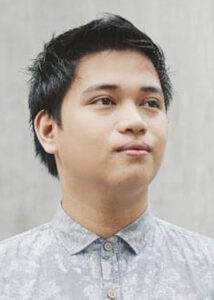 Bohol is located in the heart of the Central Visayan Region of the Philippines. It is one of the few areas in the country where Saguran weaving is practiced. Saguran, a plant fiber that comes from the petiole of the Buri Palm (Corypha elata Roxb.) is woven for centuries by the Boholanos. This study deals with the questions of how the Buri Palm relates to the weaving tradition in Bohol and how the woven textile mediates the weavers to the palm and to their botanical environment. To answer these questions from the ecological, historical, and aesthetic perspectives, the paper positions the weaving practice in its historical and ethnobotanical perspectives by carefully analyzing its possible beginnings and examining the Buri palm through the traditional knowledge of the local culture and of the people. The aesthetics of the practice are evaluated through the existing weaving implements, the primary materials, the fibers, dyestuffs and design techniques used. Further, the study uses three major research strategies This descriptive research gathers data in an ethnographic, participant-observer approach. Key informant interview is used in gathering significant data most specifically on the weavers’ design and pattern application, beliefs, and appropriations. Possible early beginnings of the practice are accessed through archival research and oral history interviewing. Archival research takes on published and unpublished materials and sources concerning the weaving practice. Ethnobotanical approach is used to further analyze the mediated relationship of the weavers, the palm, and the woven product. The analysis shows that the Buri palm plays a significant role in the lives of the Boholanos especially during the Bohol Revolution against the Spanish regime. The woven Saguran served as the utilitarian article of clothing used by the Boholano Revolutionaries. Moreover, the palm and the multitude of sources — food, clothing, and medicine — it offers to the people makes it an esteemed and revered palm. The woven Saguran mediates the weavers and the palm in ways that the weavers express their creativity in weaving various patterns and designs inspired by their natural environment.
Bohol is located in the heart of the Central Visayan Region of the Philippines. It is one of the few areas in the country where Saguran weaving is practiced. Saguran, a plant fiber that comes from the petiole of the Buri Palm (Corypha elata Roxb.) is woven for centuries by the Boholanos. This study deals with the questions of how the Buri Palm relates to the weaving tradition in Bohol and how the woven textile mediates the weavers to the palm and to their botanical environment. To answer these questions from the ecological, historical, and aesthetic perspectives, the paper positions the weaving practice in its historical and ethnobotanical perspectives by carefully analyzing its possible beginnings and examining the Buri palm through the traditional knowledge of the local culture and of the people. The aesthetics of the practice are evaluated through the existing weaving implements, the primary materials, the fibers, dyestuffs and design techniques used. Further, the study uses three major research strategies This descriptive research gathers data in an ethnographic, participant-observer approach. Key informant interview is used in gathering significant data most specifically on the weavers’ design and pattern application, beliefs, and appropriations. Possible early beginnings of the practice are accessed through archival research and oral history interviewing. Archival research takes on published and unpublished materials and sources concerning the weaving practice. Ethnobotanical approach is used to further analyze the mediated relationship of the weavers, the palm, and the woven product. The analysis shows that the Buri palm plays a significant role in the lives of the Boholanos especially during the Bohol Revolution against the Spanish regime. The woven Saguran served as the utilitarian article of clothing used by the Boholano Revolutionaries. Moreover, the palm and the multitude of sources — food, clothing, and medicine — it offers to the people makes it an esteemed and revered palm. The woven Saguran mediates the weavers and the palm in ways that the weavers express their creativity in weaving various patterns and designs inspired by their natural environment.
Bio
Christian Navarrosa Bacolod is currently a graduate student of the Department of Art Studies at the University of the Philippines – Diliman taking MA in Art Studies major in Art History. His field of interest is centered on Philippine traditional art, specifically on Visayan textile weaving traditions. His research and documentation projects on Hablon de Argao in Cebu, Piña of Aklan, and Saguran of Bohol have given him a wider and more critical perspective in dealing and handling with the artform. He has also worked with one of the Philippine’s leading textile scholars, Filipino visual artists, and fashion designers. As a fashion design enthusiast, he also incorporates local Philippine textiles and sustainable, eco-friendly materials on his garments. He is currently a part-time faculty member of the Department of Liberal Arts and Behavioral Sciences at the Visayas State University, City of Baybay, Leyte.
Jusi as Cultural Icon: A Transnational Biography
 One hundred and sixty-nine years ago, jusi made its way to The Great Exhibition of the Works of Industry of All Nations which took place in London, England; this was organised in part by Prince Albert, husband of Queen Victoria. As the name suggests, the exposition displayed the prized works of many skilled hands and sought to promote them to patrons or to the curious who entered the doors of the Crystal Palace in Hyde Park from May 1 to October 15, 1851. Before this grand debut, jusi was a household industry in Iloilo, with its history commencing with ancient weavers who made a very rugged version of the fabric using abaca fiber. This practice was readily observed by the early Spaniards who settled in the area. Then, there was an introduction to the much softer Chinese silk which used the expensive thread from silkworms. After seeing the potential of some banana fiber in silk production after it was left to dry under the heat of the sun, the weavers of Iloilo wove it into an alternative to the expensive Chinese silk. When the Spanish saw the promise of jusi in the international market, Governor General Jose Basco supported its production and secured its display in The Great Exhibition in 1851. In England, quite successfully, the booths showcasing Philippine products received a medal. How appropriately can jusi show the cooperation of nations that took place for it to become a tangible manifestation of culture! For it holds within every thread of its fabric the technology of China, the barge of Spain, the stage of Britain, and the gifts of the soil and skill of Iloilo. When one wears jusi, one dons the history of Iloilo during this period, and hopefully this perspective will somehow bring pride to its constituents.
One hundred and sixty-nine years ago, jusi made its way to The Great Exhibition of the Works of Industry of All Nations which took place in London, England; this was organised in part by Prince Albert, husband of Queen Victoria. As the name suggests, the exposition displayed the prized works of many skilled hands and sought to promote them to patrons or to the curious who entered the doors of the Crystal Palace in Hyde Park from May 1 to October 15, 1851. Before this grand debut, jusi was a household industry in Iloilo, with its history commencing with ancient weavers who made a very rugged version of the fabric using abaca fiber. This practice was readily observed by the early Spaniards who settled in the area. Then, there was an introduction to the much softer Chinese silk which used the expensive thread from silkworms. After seeing the potential of some banana fiber in silk production after it was left to dry under the heat of the sun, the weavers of Iloilo wove it into an alternative to the expensive Chinese silk. When the Spanish saw the promise of jusi in the international market, Governor General Jose Basco supported its production and secured its display in The Great Exhibition in 1851. In England, quite successfully, the booths showcasing Philippine products received a medal. How appropriately can jusi show the cooperation of nations that took place for it to become a tangible manifestation of culture! For it holds within every thread of its fabric the technology of China, the barge of Spain, the stage of Britain, and the gifts of the soil and skill of Iloilo. When one wears jusi, one dons the history of Iloilo during this period, and hopefully this perspective will somehow bring pride to its constituents.
Bio
For fifteen years, I have been a history teacher of students ranging from the fifth to the ninth grade in Child Learning Foundation, a non-profit private school in Cebu City, Philippines; I am also a Master of History student in the University of San Carlos. One of my greatest burdens for the locality is the palpable historical amnesia that pervades in it. There is a diminished value of the country partly because of this. So, I continuously seek further study and opportunity to hopefully remedy this by a faithful presentation of the country’s kaagi to those who may have forgotten.
Colonial Representations of the Visayas
Experimenting the Tropics: Towards a Reclamation of Postcolonial Photography
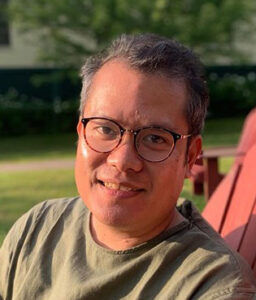 This paper presents an overview of both the critical and creative process of writing The Experiment of the Tropics. A collection of poems and lyric essays, The Experiment of the Tropics revisits early twentieth century photographs of the US occupation of the Philippines in the Cebuano Studies Centre of the University of San Carlos.
This paper presents an overview of both the critical and creative process of writing The Experiment of the Tropics. A collection of poems and lyric essays, The Experiment of the Tropics revisits early twentieth century photographs of the US occupation of the Philippines in the Cebuano Studies Centre of the University of San Carlos.
Using these archival photographs as jump-off points for lyrical rumination the book also attempts to raise the question of what it means to look at the visual history the American colonial occupation of Cebu. This paper, then, hopes to interrogate the relationships of poetry, photography and postcolonial history, by exploring the ways in which lyricism might be able to provide an alternative method of approaching this period of Cebuano history. In what ways might be the writing of poems a way of reclaiming the ways in which archival photographs are circumscribed to both an American agenda of colonial expansion and a contemporary critical preoccupation with decolonisation. Beyond the attempt to “give voice” to the silent, in what ways does contemporary poetry provide a way of interrogating the ways in which we can come to terms with this part of Cebuano history. What are the possibilities when we permit ourselves to not just look at photographs but sing?
Bio
Lawrence Lacambra Ypil is the author of two books of poetry: The Highest Hiding Place, winner of the Madrigal Gonzalez Best First Book Award and more recently The Experiment of the Tropics, winner of the inaugural Gaudy Boy Poetry Book Prize, and longlisted for the 2020 Believer Book Awards. He received an MFA from the University of Iowa for Nonfiction Writing and an MFA from Washington University IN St. Louis for Poetry on a Fulbright Scholarship. His work explores the intersection of text and image, poetry and prose He teaches creative writing at Yale-NUS College in Singapore.
Colonial Representations of Design, Order, and Harmony in the Visayas
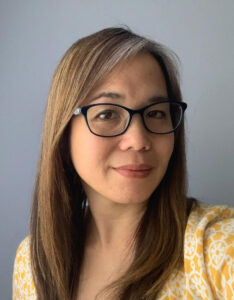 In reporting the conditions and status of the Spanish colonial enterprise in the Philippines, chroniclers used both text and illustration to describe the appearances of the different groups they encountered. Through texts such as the sixteenth century Boxer Codex and illustrations such as the 1734 map of Pedro Murillo Velarde, the general public as well as scholars can access Spanish perceptions of distinct groups such as the Visayans. The four Visayan couples illustrated in Boxer Codex convey exceptional skill and craftsmanship in goldsmithing and metalwork. In addition, the illustrator noted the full body tattoo practice of the Visayan men and women. In his 1688 History, Padre Alcina showed the weaponry of a shield and curved sword as performed in a dance. The eighteenth-century map by Padre Pedro Murillo Velarde also shows a Visayan with a curved sword as part of a vignette of Philippine native peoples. My research examines these portrayals not as historical visual instances but as indicative of sociopolitical contexts swirling around the island regions southeast of Luzon. I explore the stakes of reporting the conditions and traditions of the Visayan peoples as skilled and ornamented. Concerns about the manageability of the native population and viability of the land may have steered the descriptions. For while the historians noted the society’s ability to sustain a workforce of skilled artisans to make weapons and other implements, they also painted Visayans as resistant to order, as, according to the Boxer Codex, their beliefs were “ridiculous” and their housing “constructed without design, order, or harmony.” In the company of other academic presentations that explore language, geography and the network of international trade activities in the Visayas, I hope to enrich my study of perception and presentation of Visayan culture during the sixteenth through eighteenth centuries.
In reporting the conditions and status of the Spanish colonial enterprise in the Philippines, chroniclers used both text and illustration to describe the appearances of the different groups they encountered. Through texts such as the sixteenth century Boxer Codex and illustrations such as the 1734 map of Pedro Murillo Velarde, the general public as well as scholars can access Spanish perceptions of distinct groups such as the Visayans. The four Visayan couples illustrated in Boxer Codex convey exceptional skill and craftsmanship in goldsmithing and metalwork. In addition, the illustrator noted the full body tattoo practice of the Visayan men and women. In his 1688 History, Padre Alcina showed the weaponry of a shield and curved sword as performed in a dance. The eighteenth-century map by Padre Pedro Murillo Velarde also shows a Visayan with a curved sword as part of a vignette of Philippine native peoples. My research examines these portrayals not as historical visual instances but as indicative of sociopolitical contexts swirling around the island regions southeast of Luzon. I explore the stakes of reporting the conditions and traditions of the Visayan peoples as skilled and ornamented. Concerns about the manageability of the native population and viability of the land may have steered the descriptions. For while the historians noted the society’s ability to sustain a workforce of skilled artisans to make weapons and other implements, they also painted Visayans as resistant to order, as, according to the Boxer Codex, their beliefs were “ridiculous” and their housing “constructed without design, order, or harmony.” In the company of other academic presentations that explore language, geography and the network of international trade activities in the Visayas, I hope to enrich my study of perception and presentation of Visayan culture during the sixteenth through eighteenth centuries.
Bio
Lalaine Bangilan Little is director of the Pauly Friedman Art Gallery at Misericordia University in northeastern Pennsylvania. She previously held positions at the Allentown Art Museum in Pennsylvania and Texas A&M University. Little holds a PhD in Art History from Binghamton University. Her research interests include Portuguese-Japanese artistic encounters and Hispano-Filipino art and architecture. Little has a Master’s Degree in Museum Education from George Washington University in Washington, D.C.. She has received fellowships from the National Committee for the History of Art, the Lilly Library of Indiana University in Bloomington, and the Newberry Library in Chicago, Illinois.
Images of Visayan Women at the 1904 St. Louis Exposition: An Intersectional Feminist Approach
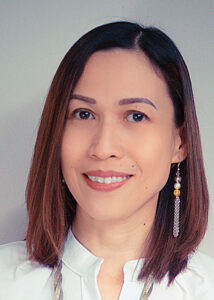 In 1904, more than 1,100 indigenous Filipinos were brought to the United States to be exhibited at the St. Louis Exposition. Photos of the exhibit represented indigenous Filipinos, especially the so-called “non-Christian tribes” as uncivilized people to justify American imperialism in the Philippines. Among the Filipinos exhibited at the Fair, only the Visayans were portrayed in a civilized manner. While indigenous Filipinos were generally represented as savages, the women were doubly so by their implied inferiority to men. And while Visayan women were depicted as civilized, their representation in photographs still promoted a certain type of gender ideology that propagated the idea of male superiority over women. Utilizing an intersectional feminist approach, this paper will analyze how representations of Visayan women in the 1904 St. Louis Exposition differed from those of other indigenous Filipino women in terms of gender, ethnicity, and religion. In analyzing the representation of Visayan women at the 1904 St. Louis Exposition, the role of photography will also be taken into consideration. While some view photographs as representations of the external world, others believe they are not mere records but interpretations of reality. Postcolonial studies on photography have produced valuable works on the use of photography for imperialist interests, while a feminist analysis might lead us to conclude that photography can also be used as an important tool to propagate racial and gender ideology.
In 1904, more than 1,100 indigenous Filipinos were brought to the United States to be exhibited at the St. Louis Exposition. Photos of the exhibit represented indigenous Filipinos, especially the so-called “non-Christian tribes” as uncivilized people to justify American imperialism in the Philippines. Among the Filipinos exhibited at the Fair, only the Visayans were portrayed in a civilized manner. While indigenous Filipinos were generally represented as savages, the women were doubly so by their implied inferiority to men. And while Visayan women were depicted as civilized, their representation in photographs still promoted a certain type of gender ideology that propagated the idea of male superiority over women. Utilizing an intersectional feminist approach, this paper will analyze how representations of Visayan women in the 1904 St. Louis Exposition differed from those of other indigenous Filipino women in terms of gender, ethnicity, and religion. In analyzing the representation of Visayan women at the 1904 St. Louis Exposition, the role of photography will also be taken into consideration. While some view photographs as representations of the external world, others believe they are not mere records but interpretations of reality. Postcolonial studies on photography have produced valuable works on the use of photography for imperialist interests, while a feminist analysis might lead us to conclude that photography can also be used as an important tool to propagate racial and gender ideology.
Notes: The research for this paper was funded by the Center for Southeast Asian Studies, University of Michigan, USA through the University Library Fellowship. A version of this essay was published in the Social Transformations: Journal of the Global South Vol. 6 No. 2, Nov. 2018.
Bio
Mary Dorothy dL. Jose teaches at the University of the Philippines Manila, where she is an Associate Professor in Philippine history and Area Studies. After finishing her BA in History and her MA in Asian Studies from the University of the Philippines Diliman, she proceeded to do a Ph.D. in Philippine Studies in the same university, which she has just completed. She was awarded the University Library Fellowship by the Center for Southeast Asian Studies at the University of Michigan in 2018 and the ENITAS (Empowering Network for International Thai and ASEAN Studies) research grant from the Institute of Thai Studies, Chulalongkorn University, Thailand in 2016. She published works on Philippine history, Philippine studies, and women’s history, and serves as consultant to several government projects as gender/Philippine Studies specialist. She is an awardee of the 2019-2021 One UP Faculty Grant Award in Women Studies for Outstanding Research and Public Service in UP Manila and served as coordinator of the UP Manila National Service Training Program (NSTP) from 2005-2011. She now serves as the Manila Studies Program Convenor and Office of the Gender Program Coordinator of the College of Arts and Sciences, UP Manila.
(Post) Colonial Legacies in Art and Architecture
Subaltern Resistance And Pastoral Theme In Art: A Visual Analysis On The Relief Of The Santo Tomas De Villanueva’s Church Façade In Miagao, Iloilo
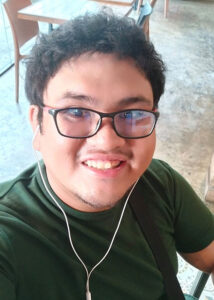 The Santo Tomas de Villanueva Church (Miagao Church) is one of the four Philippine Baroque churches declared by the United Nations Educational, Scientific, and Cultural Organization (UNESCO) as a World Heritage Site in 1993.Aside from being quake -resistant, Miagao Church was admired because of its facade. It featured Reprobus/Oferus (Saint Christopher) dressed in the attire of an indio while he held on to a coconut tree and carried the Child Jesus on his back. Various literature talks about the history and physical description of the said church-fortress however; it lacks interpretation on how the indios during the Spanish colonial era can make sense on the church’s aesthetics. Hence, synthesizing Chandra’s (2015) and Blanco’s (2008) theses, this paper argues that the image in the relief of Miagao Church’s façade promotes subaltern resistance by negotiating social power to pursue emancipatory possibilities and envisions a recovery and redemption to their lost paradise (specifically their kasaganaan and kagawasan). Using visual semiotic interpretation and intertextuality through the use of archives and literary work (like the Lactud nga Pag-asuy sang Quinabuhi ni San Cristobal or A Short Narration of St. Christopher’s Life), the relief can portray the image of a subaltern indio who carried the burden (like how Reprobus carried the Child Jesus in the river) from being subjected to Spanish imposed policies such as polo y servicio, to consequent piracies of the Moros, and to disastrous famine and cholera outbreak which all happened during 18th and 19th century. With the façade, they can articulate their sufferings. At the same time, the indios aspire that, they would be freed from these exploitations and challenges and someday, they can go back to their “Lost Eden”.
The Santo Tomas de Villanueva Church (Miagao Church) is one of the four Philippine Baroque churches declared by the United Nations Educational, Scientific, and Cultural Organization (UNESCO) as a World Heritage Site in 1993.Aside from being quake -resistant, Miagao Church was admired because of its facade. It featured Reprobus/Oferus (Saint Christopher) dressed in the attire of an indio while he held on to a coconut tree and carried the Child Jesus on his back. Various literature talks about the history and physical description of the said church-fortress however; it lacks interpretation on how the indios during the Spanish colonial era can make sense on the church’s aesthetics. Hence, synthesizing Chandra’s (2015) and Blanco’s (2008) theses, this paper argues that the image in the relief of Miagao Church’s façade promotes subaltern resistance by negotiating social power to pursue emancipatory possibilities and envisions a recovery and redemption to their lost paradise (specifically their kasaganaan and kagawasan). Using visual semiotic interpretation and intertextuality through the use of archives and literary work (like the Lactud nga Pag-asuy sang Quinabuhi ni San Cristobal or A Short Narration of St. Christopher’s Life), the relief can portray the image of a subaltern indio who carried the burden (like how Reprobus carried the Child Jesus in the river) from being subjected to Spanish imposed policies such as polo y servicio, to consequent piracies of the Moros, and to disastrous famine and cholera outbreak which all happened during 18th and 19th century. With the façade, they can articulate their sufferings. At the same time, the indios aspire that, they would be freed from these exploitations and challenges and someday, they can go back to their “Lost Eden”.
Bio
Elgin Glenn R. Salomon is Instructor at the Division of Social Sciences, College of Arts and Sciences University of the Philippines Visayas in Miagao, Iloilo. He is also a student of the MA Philippine Studies program at the Asian Center, University of the Philippines Diliman. His research interests include visual methodologies, subaltern studies, and Martial Law in Mindanao (particularly in the Sulu archipelago). He recently published his article on the City Beautiful Plan of Iloilo City at the Philippine Sociological Review (Volume 67).
Marking A Turn In Tradition: Raymundo Francia’s Illusionistic Ceiling Paintings In The Heritage Churches Of Cebu And Bohol
The study examines the life and times of the obscured Cebuano painter, Raymundo Rubi Francia and his ceiling paintings in the churches of Cebu and Bohol. It hopes to locate in Philippine art history the place of Francia as a regional artist and the significance of his works as architectural paintings. From the illusionistic ceiling painting tradition started by Italian scenographers at the San Agustin Church in Intramuros in the late 1800’s, the paper illustrates the development of trompe l’oeil ceiling painting tradition in the country. Soon after the social unrest brought about by the Revolution and the Philippine-American War, a renewal of interest for painted ceilings was particularly evident in the islands of Cebu and Bohol where Raymundo Francia provided the artistic lead, painting as many as twenty-two ceiling projects. Francia’s works show a continuity of pictorial and stylistic composition inherited from the San Agustin church decoration but his subjects depict a different temporality that seemingly questions the new American colonial order. Francia’s paintings serve as didactical tool for a threatened Catholic Church in reasserting its influence vis-à-vis the growing enthusiasm for American public education and entertainment, the spread of Protestantism and the economic rise of local communities. The paper shows the important role of art and architecture in the wielding of power, the construction of social relations and pride of place.
Bio
Jay Nathan T. Jore teaches art history and theory, graphic and product design at the University of the Philippines Cebu Fine Arts Program where he serves as program coordinator. He is also the curator and director of the Jose T. Joya Gallery in UP Cebu. He finished his MA Art Studies: Art Theory and Criticism at the University of the Philippines Diliman where he completed his research on the church ceiling paintings of Cebu and Bohol. He also worked as art historian for Project Kisame that documents, studies and promotes the conservation of ceiling paintings of Philippine churches.
The Visayas and Contemporary Art Practice
Visayan Sensibilities Through Art Practice
VIVA EXCON is a Visayas-wide biennale which was started by the art group Black Artist in Asia in 1990 in Bacolod City and whose hosting has since then toured the Visayan Islands every two years without fail. It has become an effective artist-centered blueprint with which other like initiatives have been patterned after. It was the main goal of VIVA ExCon to celebrate Visayan art by bridging the islands of the Visayas so as to provide a venue to facilitate dialogues, interaction, networking and cultural exchanges, thus addressing fundamental and relevant issues among visual art communities and related stakeholders. Having accomplished such goals in the 30 years of its existence, it now looks towards the future in ways that can best contribute to the development of the communities it serves. Its objectives are: 1. To empower local art practices; 2. To be relevant to the challenges of the changing times; 3. To explore opportunities for collaboration and forging of resources among sectors of the community; 4. To respond to art related issues pro actively; and 5. To design a preferred future for the artist community. The theme ‘What Now’ is in keeping with Futures Studies which postulates possible, probable, and preferable futures and the world views and myths that underlie them. ‘What Now” seeks to understand the context and circumstance of the art community in relation to the sectors of the community it coexists with, what is likely to continue and what could plausibly change. Part of the creative initiative is to seek a systematic and pattern-based understanding of past and present, promote inclusivity, and determine the likelihood of future events and trends so as to better respond with alternatives towards a much preferred future.
Bio
Mariano “Manny” G. Montelibano III (b. 1971) lives and works in Bacolod, the province of Negros Occidental, Philippines. Currently, he is the Director of the Institute of the Moving Image of the University of St. La Salle. He is an active cultural worker in the Philippines, especially in the Visayas region, affiliated with the National Commission for Culture and the Arts of the Philippines, Black Artists in Asia Association, VIVA EXCON Organization and is the Director of the Visayas Islands Visual Arts Exhibition and Conference 2020 in Bacolod City, one of the oldest, artist initiated Biennial in the Philippines.
The Peacock Chair
Born in Cebu, Philippines, my aesthetics and skills as a designer were formed by the landscape of export-oriented design and manufacturing that surrounded me. Only in moving to the Netherlands, did my perspective shift towards the curious nature of exoticism and orientalization in Southeast Asian craft. With its handicraft industry primarily catered for exporting goods, the Philippines is a country of known for its makers before its designers: handling first the production needs of the international design community. As a point of reference in this design research, I focused on the peacock chair: a ubiquitous furniture piece originating from the handiwork of prisoners the Bilibid jail in the Philippines that can be seen as a metaphor for anonymity in Southeast asian craft labor. In this research, the designer uncovered a multiplicity of narratives found within the peacock chair: identities of counterculture, black power, eroticism, social media spectacle and celebrated export design. The question dives deeper towards an understanding of the celebrated anonymity of southeast asian manufactured goods as effects of orientalism and neocolonialism. The designer chose to focus on developing an installation exploring decolonisation in design: the action, the image and the material, and realised through the final output: a seated karaoke installation. This peacock chair of exoticism, collecting, deconstructing and re-weaving anonymous craft objects from asian stores and secondhand shops, purposefully engaging in a reductive act of homogenizing all “oriental” design, literally and metaphorically a uncomfortable design to perceive for both designer and viewer. The karaoke element is a product of having amassed a collection of pictures and videos of various celebrities on peacock chairs, inter spliced them with footage of the typical tourist destinations in the Philippines and used the medium of karaoke, the Filipino unofficial national past time, to discuss themes of hybridity in decolonisation.
Bio
Mona Alcudia is a multi-disciplinary designer focusing on design research and critical storytelling. She has recently finished her MA in Contextual Design from Design Academy Eindhoven in the Netherlands after receiving a fellowship grant from the University of the Philippines System. She is now a professor and coordinator of the Product Design program of the College of Communication, Art and Design, and the manager of Fablab UP Cebu. She is interested with non-linear narratives surrounding craft industries, pop culture, tropicality and the evolving dynamic between the digital and traditional.
Film Festivals and the Reshaping of the 21st Century Cebuano Cinema
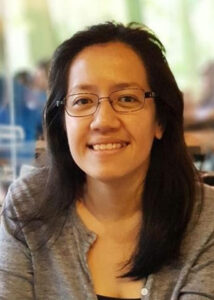 During the golden period of Cebuano Cinema (1950s), Cebu was home to several production companies, which were mainly owned and run by Cebuano families. Parallel to this substantial number of Cebuano film production companies were several family-owned theaters in Colon, which became the main exhibition platform for Cebuano films. Soaring production costs and the loss of its top talents to its Manila counterpart, plus competition for screening with Manila-produced films, and the international infiltration from Hollywood resulted in the Cebuano film industry’s demise. A few production companies tried to revive local film production in the 1970s including the production of the blockbuster Ang Manok ni San Pedro, which Nick Deocampo would later refer to as a “remarkable feat” in film distribution. The 21st century revival of Cebuano film production has been mainly sustained by film festivals and short film competitions. In effect, film festivals have become the main exhibition platform for Cebuano filmmakers. In 2005, Sinulog Foundation launched its very first Sinulog Short Film Festival as part of the Sinulog 2005 celebration. Festival entries were focused on the Cebuanos’ devotion to the Sto Niño. In 2009, BINISAYA Film Festival was launched by Keith Deligero with his former college classmates to promote film production for a truly Cebuano audience. With recourse to Pierre Bourdieu’s concept of the symbolic capital, this paper examines the role of film festivals in reshaping 21st Century Cebuano cinema. This paper will also analyze the value of film festivals in recreating awareness, of a distinctly Cebuano cinema, among the Cebuano audience.
During the golden period of Cebuano Cinema (1950s), Cebu was home to several production companies, which were mainly owned and run by Cebuano families. Parallel to this substantial number of Cebuano film production companies were several family-owned theaters in Colon, which became the main exhibition platform for Cebuano films. Soaring production costs and the loss of its top talents to its Manila counterpart, plus competition for screening with Manila-produced films, and the international infiltration from Hollywood resulted in the Cebuano film industry’s demise. A few production companies tried to revive local film production in the 1970s including the production of the blockbuster Ang Manok ni San Pedro, which Nick Deocampo would later refer to as a “remarkable feat” in film distribution. The 21st century revival of Cebuano film production has been mainly sustained by film festivals and short film competitions. In effect, film festivals have become the main exhibition platform for Cebuano filmmakers. In 2005, Sinulog Foundation launched its very first Sinulog Short Film Festival as part of the Sinulog 2005 celebration. Festival entries were focused on the Cebuanos’ devotion to the Sto Niño. In 2009, BINISAYA Film Festival was launched by Keith Deligero with his former college classmates to promote film production for a truly Cebuano audience. With recourse to Pierre Bourdieu’s concept of the symbolic capital, this paper examines the role of film festivals in reshaping 21st Century Cebuano cinema. This paper will also analyze the value of film festivals in recreating awareness, of a distinctly Cebuano cinema, among the Cebuano audience.
Bio
Rose Arong is an Associate Professor at the University of the Philippines Cebu. Her research interests include narratology, Philippine literature, graphic narratives, Cebuano history and culture, and medical humanities. Her articles have appeared in the Publishing Research Quarterly, Postcolonial Studies, Journal of Graphic Novels and Comics, Kritika Kultura, ARIEL, and Text Matters. Her book, A Veritable Terra Incognita: Situating the Philippines in Postcolonial Literature, was published by UST Publishing House in 2020.
Visual Presentations
Fish Traps (bubu) in the Philippines with Special Reference to Moray Trap (Bantak)
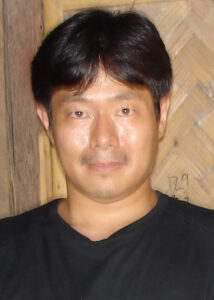 This presentation is an ethnographic account of moray fishing activity using bamboo trap of Mactan Island, Cebu located in Visayas Islands of the Philippines. Several bamboo trap fishing activities are engaged on the tidal flat of Mactan Island; bantak for moray, teming for small fish and crabs, and panggal for rabbit fish and wrasse. This presentation focuses on moray fishing using a bantak. Small moray are harvested and eaten mainly in Mactan. Furthermore, moray festival is a main event because the catch is abundant. Moray is an important resource in terms of subsistence of the small-scale fishermen economically and the area socio-culturally for tourism, etc. Moray fishing is practiced with using bamboo traps knitted with bamboo splits by men. More or less a hundred of bamboo are set on fishing ground on tidal flat when it is low tide and collect in next day. About two hundred morays are harvested with a hundred traps. About eighty percent of traps are filled with morays. It suggests that fishermen might know where to set the traps as a habitus. Moray fishing is year-round activity and supports local poor fishermen greatly. This is a main fishing activity in Mactan Island and the maritime culture. This presentation shows data about the making of bamboo trap, food culture of moray, how to set the trap on tidal flat, how to harvest moray from material cultural, ecological, and economic scopes to identify the fishing method and subsistence activity of the fishermen totally. This bamboo-used moray fishing must be succeeded from the past since people adopted on tidal flat environment for harvesting foods with a high probability. It is one of the key to understand an eco-cultural adaptation on tidal flat environment of Visayan people. This presentation also evaluates the classic bamboo-used moray trap widely practiced for the subsistence activity and the ecological knowledge of the people living in the environment of Visayas.
This presentation is an ethnographic account of moray fishing activity using bamboo trap of Mactan Island, Cebu located in Visayas Islands of the Philippines. Several bamboo trap fishing activities are engaged on the tidal flat of Mactan Island; bantak for moray, teming for small fish and crabs, and panggal for rabbit fish and wrasse. This presentation focuses on moray fishing using a bantak. Small moray are harvested and eaten mainly in Mactan. Furthermore, moray festival is a main event because the catch is abundant. Moray is an important resource in terms of subsistence of the small-scale fishermen economically and the area socio-culturally for tourism, etc. Moray fishing is practiced with using bamboo traps knitted with bamboo splits by men. More or less a hundred of bamboo are set on fishing ground on tidal flat when it is low tide and collect in next day. About two hundred morays are harvested with a hundred traps. About eighty percent of traps are filled with morays. It suggests that fishermen might know where to set the traps as a habitus. Moray fishing is year-round activity and supports local poor fishermen greatly. This is a main fishing activity in Mactan Island and the maritime culture. This presentation shows data about the making of bamboo trap, food culture of moray, how to set the trap on tidal flat, how to harvest moray from material cultural, ecological, and economic scopes to identify the fishing method and subsistence activity of the fishermen totally. This bamboo-used moray fishing must be succeeded from the past since people adopted on tidal flat environment for harvesting foods with a high probability. It is one of the key to understand an eco-cultural adaptation on tidal flat environment of Visayan people. This presentation also evaluates the classic bamboo-used moray trap widely practiced for the subsistence activity and the ecological knowledge of the people living in the environment of Visayas.
Bio